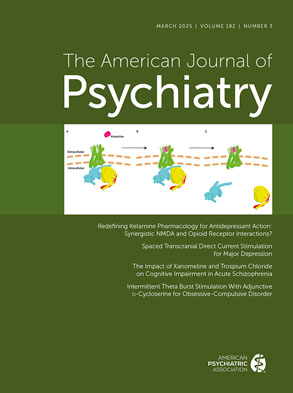The neurobiological underpinnings of eating disorders have not been well characterized and are poorly understood. Efforts to identify and study neural substrates associated with eating disorders have the potential to guide nosology, inform conceptual models of etiology, and advance developments of novel interventions. Yet studying these illnesses is challenging because they frequently manifest during adolescence when the brain is still developing, malnutrition secondary to eating disorders affects brain structure and function, and some psychiatric treatments may affect the brain as well. Drawing crisp conclusions from studies of adults with eating disorders is further complicated by the difficulty in determining whether observed between-group differences exist as neural endophenotypes of these disorders or as effects of chronic illness, malnutrition, or treatment. Hence, while there are confounds inherent to brain imaging research across psychiatric disorders, they are magnified in the study of eating disorders.
Focusing on non-low-weight eating disorders, such as bulimia nervosa, particularly in adolescence, can offer broad insight into the neurobiology of a range of eating disorders given their shared clinical features and the high rates of longitudinal diagnostic crossover (
1) while obviating the complications of acute starvation. One cognitive-behavioral domain in eating disorders is self-regulatory control. By definition, bulimia nervosa involves dysregulated self-control that manifests in eating disorder symptoms such as failed dietary restraint, loss of control over eating, engagement in (often dangerous) compensatory behaviors, and inability to inhibit preoccupying thoughts about weight, shape, eating, and control. For individuals with bulimia nervosa, this dysregulation in self-control often extends beyond eating disorder symptoms to include difficulties with affect regulation, problematic substance use, self-harming behaviors, stealing, and truancy, all of which may reflect a common underlying dysregulation of self-control processes.
In this issue of the
Journal, Marsh et al. (
2) employ a self-regulatory control fMRI paradigm (using the Simon spatial incompatibility task) to study adolescent girls with a short duration of bulimia nervosa compared with healthy comparison subjects. These adolescents were instructed to indicate the direction an arrow was pointing (left or right) while ignoring (suppressing attention and response to) the spatial placement of the stimuli (left or right). The investigators were interested in behavioral performance (number of errors and response time) as well as neural response, particularly to the incongruent and congruent trials. In exploratory analyses, the investigators examined whether there was a facilitating effect of context (i.e., whether performance and neural activation would be improved or increased in the incongruent trials that were preceded by an incongruent trial) and whether neural activation was related to bulimic symptoms. Adolescents with and without bulimia nervosa performed similarly on the behavioral study task. Those with bulimia nervosa showed less activation in the right frontostriatal regions and greater deactivation in left inferior and superior frontal gyri and right posterior cingulate cortex during the study. The degree of neural deactivation among adolescents with bulimia nervosa was positively correlated with frequency of binge eating and vomiting and degree of preoccupation with body weight and shape. The authors speculated that the failure of the frontostriatal regions to engage in the girls with bulimia nervosa reflected the subjects' difficulty with self-regulatory control, while the deactivation of other specific regions may have reflected their on-task disengagement of the default network.
Marsh and colleagues' research is an example of the progression of neuroimaging research on psychiatric illnesses, which has moved during the past decade from symptom-specific provocation tasks to more refined activation studies utilizing cognitive neuroscience paradigms. The findings from Marsh et al. replicate and converge with those of a previous study from the same laboratory that used a similar self-regulatory control paradigm in adults with bulimia nervosa (
3). The employed paradigms measure control of attention and response using nonaffectively loaded stimuli, suggesting that the basic underlying cognitive-behavioral process is affected even when it is dissociated from the eating disorder.
This research is consistent with the National Institute of Mental Health's Research Domain Criteria initiative (
4), which calls for neurobiological research aimed at identifying neural substrates to inform classification schemes, and may be useful in text revisions to DSM-5 (
5). Distinctions between the specific eating disorders are often blurry, and research along this line could clarify those boundaries. If a fundamental element of bulimia nervosa—and of eating disorders more broadly—is an abnormality in self-regulatory control (either under- or overcontrol), it would be valuable to build on these findings by developing a battery of such tasks. Could imaging studies elucidate heterogeneity underlying eating disorders that would inform revisions to DSM? While there are high rates of crossover among all eating disorders, a subset of those with bulimia nervosa have no history of anorexia nervosa, and likewise, a subset of those with anorexia nervosa will remain chronic restrictors without developing binge eating and vomiting behaviors or crossing over to bulimia nervosa. Would differences in the neural response to self-regulatory control tasks help to inform these distinctions? Likewise, such indices could also help explore the relationship between eating disorders and other psychiatric conditions (e.g., obsessive-compulsive disorder).
Recent research in eating disorders has focused on specific cognitive-behavioral probes of self-regulatory control. For instance, data from one study utilizing a go/no-go task to examine inhibitory control (
6) support the distinctions between restricting-type eating disorders and binge eating and vomiting-type disorders in adolescents; the findings suggest excessive inhibition in those with restricting behaviors and disinhibition in those with binge eating and vomiting behaviors. As this line of inquiry is still in its infancy, investigators are encouraged to undertake direct replication studies. Moreover, it will be important to extend the evidence base through convergent validation from findings across complementary paradigms and across eating disorder diagnoses, to include both actively ill and recovered patients as participants, and to broaden the population of interest to include nonaffected family members. It would also be interesting to learn whether between-group differences in neural activation are augmented during symptom-relevant self-regulatory control tasks (e.g., those that are appetitive or affectively driven) when symptomatic cognitive-behavioral responses would be activated. In addition to guiding classification, this research may also serve to identify novel cognitive-behavioral targets for new treatments.

